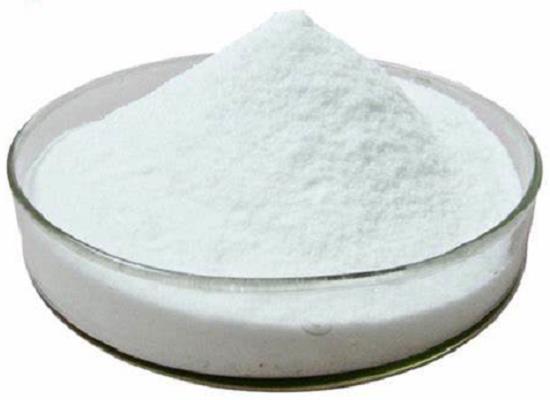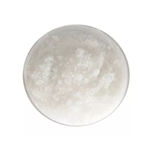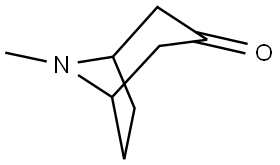Tropinone: properties, applications and safety
General Description
Tropinone is a naturally occurring organic compound with a diverse range of applications. It serves as a key precursor in the synthesis of important alkaloids and pharmaceuticals, such as cocaine and atropine. Tropinone has a unique set of properties, including its stability, reactivity, and solubility characteristics. It finds extensive use in the pharmaceutical industry for the production of therapeutic agents and in the agricultural and chemical industries for crop improvement and chemical synthesis. When used appropriately and under medical supervision, tropinone has demonstrated a generally safe profile. However, it is important to note that improper or excessive use can lead to side effects.

Figure 1. Tropinone
Properties
Tropinone is a naturally occurring organic compound with a unique set of properties. It is derived from tropane and serves as a key precursor in the synthesis of various important alkaloids, such as cocaine and atropine. Firstly, tropinone is a colorless crystalline solid with a characteristic odor. It has a molecular formula of C8H13NO and a molar mass of approximately 139.2 g/mol. This compound exhibits a high melting point of around 40-44°C and a boiling point of about 113°C. Tropinone possesses a cyclic structure with a seven-membered ring, which contributes to its stability and reactivity. It is a ketone, meaning it contains a carbonyl group (C=O) attached to an internal carbon atom. In terms of solubility, tropinone is sparingly soluble in water but dissolves well in organic solvents such as ethanol, ether, and chloroform. One notable property of tropinone is its ability to undergo various chemical transformations, including reduction, oxidation, and condensation reactions. These transformations allow for the synthesis of numerous alkaloids with diverse pharmacological activities. In conclusion, tropinone is a versatile compound with significant importance in alkaloid synthesis. Its unique properties, such as its stability, reactivity, and solubility characteristics, make it a valuable building block in the pharmaceutical industry. 1
Applications
Tropinone, a bicyclic organic compound, is widely known for its diverse applications in various fields. With its unique chemical structure and properties, tropinone has found extensive uses in pharmaceutical, agricultural, and chemical industries. In the pharmaceutical industry, tropinone serves as a crucial precursor for the synthesis of numerous therapeutic agents. It is a key intermediate in the production of drugs such as atropine, scopolamine, and pirenzepine, which are used to treat various medical conditions including motion sickness, gastrointestinal disorders, and ophthalmic inflammation. Tropinone derivatives also play a significant role in the development of local anesthetics and anticonvulsant medications. Furthermore, tropinone finds applications in the agricultural sector. It is utilized in the synthesis of plant growth regulators that help in improving crop yield, disease resistance, and fruit quality. Tropinone-based compounds are also used as insecticides and herbicides, aiding in pest control and weed management. Additionally, tropinone is employed in the chemical industry as a starting material for the production of various organic compounds. It serves as a building block in the synthesis of complex molecules, including alkaloids and pharmaceutical intermediates. Tropinone derivatives are extensively utilized in the manufacture of flavors, fragrances, dyes, and polymers. With its wide range of applications, tropinone demonstrates its significance in pharmaceutical, agricultural, and chemical industries. 2
Safety
Tropinone's safety profile has been extensively studied and evaluated. Numerous scientific studies have demonstrated that when used in appropriate doses and under proper medical supervision, tropinone exhibits a generally safe profile. Firstly, tropinone has been widely used in the pharmaceutical industry for its role as a precursor in the synthesis of various important drugs, including cocaine and atropine. This highlights its potential therapeutic value when used responsibly and within the constraints of medical guidelines. Secondly, it is important to note that tropinone does possess some side effects and potential risks, especially when used improperly or in excessive amounts. Common side effects may include dizziness, nausea, dry mouth, and increased heart rate. These effects are typically mild and temporary. In conclusion, tropinone, when used appropriately and under medical supervision, can offer potential therapeutic benefits. 3
Reference
1. PubChem. COMPOUND SUMMARY: Tropinone. National Library of Medicine, 2005, PubChem CID: 79038.
2. Piechowska K, Mizerska-Kowalska M, Zdzisińska B, Cytarska J, Baranowska-Łączkowska A, Jaroch K, Łuczykowski K, Płaziński W, Bojko B, Kruszewski S, Misiura K, Łączkowski KZ. Tropinone-Derived Alkaloids as Potent Anticancer Agents: Synthesis, Tyrosinase Inhibition, Mechanism of Action, DFT Calculation, and Molecular Docking Studies. Int J Mol Sci. 2020 Nov 28;21(23):9050.
3. Tropinone. European Chemicals Agency, EC / List no. 208-530-6.
Related articles And Qustion
See also
Lastest Price from Tropinone manufacturers

US $5.00/kg2025-11-03
- CAS:
- 532-24-1
- Min. Order:
- 1kg
- Purity:
- 99%
- Supply Ability:
- 300tons

US $10.00/ASSAYS2025-05-04
- CAS:
- 532-24-1
- Min. Order:
- 1ASSAYS
- Purity:
- 99%
- Supply Ability:
- 100kg


